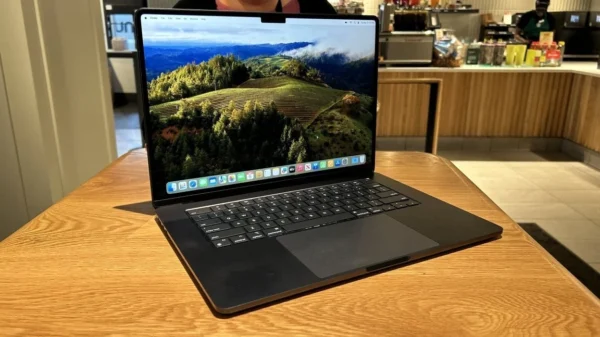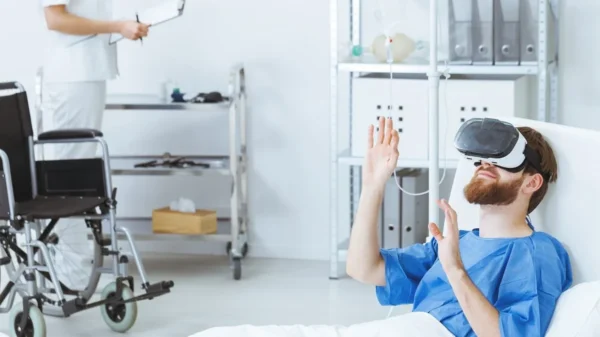Robotic Surgery
“Precision at the Cutting Edge: Robotic Surgery’s Astonishing Transformation of the Operating Room”
Key Takeaways:
- Robotic surgery transforms modern medicine, with precise and dexterous robotic platforms assisting surgeons.
- The Da Vinci Surgical System pioneered robotic surgery, allowing complex procedures through tiny incisions with enhanced visualization.
- For better surgical capabilities, next-gen robotic platforms offer haptic feedback, advanced imaging, and smaller arms.
- Key benefits include enhanced precision, minimal invasiveness, faster recovery, and improved visualization.
- Expanding applications cover cardiac, orthopedic, gynecological, urological, and neurosurgical procedures.
- Challenges involve costs, accessibility, surgeon training, ethics, and legal implications.
- The future includes AI integration, smarter robots, nanorobotics for microscale surgery, and collaboration for patient-centered advancements.
In the rapidly evolving landscape of modern medicine, a remarkable technological revolution is underway within the walls of operating rooms worldwide. Robotic surgery, once the stuff of science fiction, has emerged as a groundbreaking phenomenon that reshapes the way surgeries are performed and redefines the boundaries of human capability. Imagine a world where the surgeon’s steady hand is augmented by the precision and finesse of cutting-edge robotic systems, where procedures once considered complex and invasive are performed with remarkable ease through tiny incisions. This is the reality we find ourselves in today.
Robotic surgery is the marriage of human expertise and technological ingenuity. At its core, it involves using advanced robotic platforms to assist surgeons in performing intricate and delicate procedures with unparalleled precision and skill. Through a carefully orchestrated dance of human skill and robotic assistance, these systems offer a level of accuracy that was once unimaginable. The capabilities of robotic surgery are expanding daily, heralding a time when only our imaginations will limit what is possible to accomplish in medicine.
As we delve into robotic surgery, we find the trailblazer—the Da Vinci Surgical System. Introduced in the early 2000s, this remarkable creation by Intuitive Surgical set the stage for the widespread adoption of robotic surgery. With its elegant robotic arms and wristed instruments, the Da Vinci system proved a game-changer, empowering surgeons to perform complex procedures through tiny incisions with greater finesse and reducing patient trauma. Its intuitive console and 3D visualization opened up new frontiers, paving the way for countless success stories across various medical disciplines.
Yet, as the saying goes, “innovation never sleeps,” and the world of robotic surgery is no exception. While the Da Vinci system remains the trailblazer, next-generation robotic platforms are emerging, propelling the field into new territory. These advanced systems strive to overcome their predecessors’ limitations by integrating haptic feedback, reducing robotic arm sizes, and incorporating cutting-edge imaging technologies. The competition between these new players is not just a race for supremacy; it is a mission to improve patient outcomes, empower surgeons, and push the boundaries of medical progress.
Moreover, robotic surgery is not limited to a specific domain. We will delve into the expanding applications of these systems across various medical specialties, from cardiac and orthopedic surgeries to gynecological, urological, and even neurosurgical procedures. Each advancement opens up new hope, enabling patients to undergo surgery with newfound confidence and surgeons to perform with heightened mastery.
As with any technology that pushes the boundaries of human potential, robotic surgery comes with challenges and ethical considerations. In our exploration, we will confront questions related to cost, surgeon training, and the legal implications of this futuristic approach to medicine. It is essential to tread carefully, ensuring that this transformative force remains guided by principles prioritizing patient well-being and ethical practice.
Finally, we will peek into the crystal ball and glimpse the future of robotic surgery. A future where artificial intelligence and robotics entwine to create an inseparable partnership. We will explore the possibilities of AI integration and the potential for autonomous robots capable of performing intricate tasks under human supervision. Furthermore, we will contemplate the emerging field of nanorobotics, where minuscule robotic devices may one day navigate the human body, offering targeted treatment and healing at a cellular level.
Advancements in Robotic Surgical Systems
Da Vinci Surgical System: Pioneering Robotic Surgery
In modern surgical innovation, the Da Vinci Surgical System stands tall as the pioneer of robotic surgery. The Da Vinci system, which Intuitive Surgical first unveiled in 2000, signaled a turning point in medicine by ushering in a new era of accuracy and finesse in surgical procedures. At its heart, the Da Vinci system consists of four interactive robotic arms and a high-definition 3D camera operated by a skilled surgeon through a console. These robotic arms act as an extension of the surgeon’s hands, translating their movements into precise actions within the patient’s body.
The Da Vinci system’s articulating instruments, with their ability to mimic human wrist movements, offer a skill level previously unattainable in traditional laparoscopic surgery. This enhanced range of motion allows surgeons to navigate tight spaces and perform intricate tasks with exceptional precision, making it particularly valuable in delicate surgeries.
The system’s 3D visualization provides a comprehensive view of the surgical site, allowing surgeons to discern fine details and identify critical structures easily. This heightened visual acuity enhances decision-making during surgery, improving patient outcomes and reducing complications and risks.
Next-Generation Robotic Platforms: Beyond Da Vinci
While the Da Vinci Surgical System remains at the forefront of robotic surgery, a new wave of next-generation robotic platforms pushes the boundaries further. These systems aim to address the limitations of their predecessors and introduce innovative features that enhance the surgical experience.
One noteworthy advancement is the refinement of robotic arm designs, reducing their size while maintaining or augmenting their dexterity. Smaller robotic arms offer surgeons greater flexibility in accessing tight anatomical spaces, reducing the need for larger incisions and promoting minimally invasive procedures.
Moreover, these next-generation systems integrate advanced imaging technologies, providing surgeons with even more comprehensive views of the surgical field. Real-time augmented reality overlays and multi-modal imaging help surgeons navigate complex anatomies with unparalleled accuracy, revolutionizing their ability to perform intricate surgeries.
Another groundbreaking development is the incorporation of haptic feedback, allowing surgeons to feel tactile sensations through the robotic instruments. This crucial innovation enhances the surgeon’s sense of touch, further refining their ability to perform intricate movements during surgery. With haptic feedback, surgeons can differentiate between tissues, feel resistance, and apply gentle pressures—critical elements in delicate procedures such as tumor removal or nerve-sparing surgeries.
In addition to these advancements, some next-generation robotic systems are exploring the potential of integrating artificial intelligence (AI). AI algorithms can analyze vast patient data and provide real-time insights during surgery. This augmented intelligence can assist surgeons in making informed decisions, predicting potential complications, and optimizing surgical strategies, ultimately leading to even better patient outcomes.
Key Benefits and Advantages of Robotic Surgery
Enhanced Precision and Dexterity
One of the most significant advantages of robotic surgery lies in its ability to offer enhanced precision and skill. The robotic arms’ wristed instruments and the elimination of hand tremors enable surgeons to perform intricate maneuvers with exceptional accuracy. This precision is particularly valuable in surgeries involving delicate structures or those located in confined spaces, where traditional laparoscopic tools may have limitations.
Minimally Invasive Procedures and Faster Recovery
Robotic surgery has revolutionized the concept of minimally invasive procedures, significantly benefiting patients in terms of reduced trauma and faster recovery. The use of small incisions translates to less post-operative pain, minimized scarring, and shorter hospital stays. As a result, patients can return to their daily activities much sooner, leading to an improved overall quality of life.
Improved Visualization and Instrumentation
Surgeons have an unmatched view of the surgical site thanks to the 3D high-definition visualization that robotic systems provide. This improved visualization allows for better identification of critical structures and precise navigation, reducing the risk of accidental damage to surrounding tissues. Additionally, the robotic instruments’ exceptional range of motion enables surgeons to access challenging anatomical locations with ease, expanding the scope of what is achievable through minimally invasive surgery.
- Remote and Tele-Operated Robotic Surgery
A groundbreaking application of robotic surgery lies in remote and teleoperated procedures. With advancements in communication technologies, it is now possible for surgeons to perform procedures on patients in different geographical locations. This capability is particularly valuable in disaster response or providing medical expertise to underserved areas. Additionally, telerobotic surgery holds the potential for space exploration missions, where medical intervention might be required for astronauts in distant locations.
Expanding Applications of Robotic Surgery
Cardiac Surgery and Beyond
Robotic surgery has made significant strides in cardiac procedures, pushing the boundaries of what was once possible. Robotic-assisted techniques have revolutionized complex surgeries like mitral valve repairs and coronary artery bypass grafting, which previously required large incisions. By employing robotic systems, cardiac surgeons can access the heart through smaller incisions between the ribs, reducing trauma to the chest and allowing for faster recovery times. Additionally, the enhanced visualization and precise movements offered by robotic arms enable surgeons to navigate the intricacies of the heart with exceptional accuracy, resulting in better outcomes and improved patient satisfaction.
Beyond cardiac surgery, robotic systems are being explored in thoracic surgeries, such as lung resections and mediastinal procedures. These applications demonstrate the versatility of robotic surgery, proving its worth in a wide range of procedures and solidifying its place as a transformative force in cardiovascular medicine.
Robotic-Assisted Orthopedic Procedures
In orthopedic surgery, joint replacement procedures have witnessed a paradigm shift with the integration of robotic technology. In particular, knee and hip replacements benefit from robotic-assisted systems’ precision and meticulous planning.
The process typically begins with preoperative imaging, where the robotic system creates a three-dimensional model of the patient’s joint anatomy. Surgeons can then utilize this virtual model to plan the surgery with exceptional precision, customizing the procedure to each patient’s unique anatomy. During surgery, the robotic arm assists the surgeon in executing the preplanned movements, ensuring accurate alignment and positioning of implants.
This level of precision is particularly advantageous for total knee replacements, where optimal alignment is critical for the long-term success of the procedure. By enhancing the alignment and balance of the knee joint, robotic-assisted knee replacements offer patients an improved range of motion, reduced wear on the implant, and a more natural feel to the joint, leading to enhanced postoperative function and durability.
Gynecological and Urological Robotic Surgery
The development of robotic technology has transformed gynecological and urological surgeries. Procedures such as hysterectomy, myomectomy (removal of fibroids), and prostatectomy (removal of the prostate gland) are now routinely performed with the assistance of robotic systems.
In gynecological surgeries, the robot’s articulated instruments and 3D visualization offer surgeons an enhanced field of view and unparalleled control during delicate procedures. This precision allows for preserving healthy tissue and critical structures, reducing postoperative pain, minimal scarring, and faster patient recovery.
Similarly, in urology, robotic-assisted procedures have become the gold standard for prostatectomies. With the robotic arms’ exceptional maneuverability, surgeons can perform precise movements around delicate structures such as nerves and blood vessels, reducing the risk of complications like urinary incontinence and erectile dysfunction. Moreover, the magnified view provided by the 3D camera aids in nerve-sparing techniques, ensuring the preservation of erectile function when possible.
- Robotic Systems in Neurosurgery
With its high stakes and intricate intricacies, neurosurgery has embraced robotic technology to enhance surgical precision and safety. Robotic-assisted neurosurgery offers several key advantages, particularly in brain and spinal procedures.
In brain surgery, robotic systems facilitate more accurate and controlled movements during tumor resections and deep brain stimulation procedures. The robot’s steady hand and minute adjustments aid in preserving healthy brain tissue while removing tumors with exceptional precision. This level of accuracy significantly reduces the risk of damage to critical brain structures, contributing to improved patient outcomes and reducing the potential for neurological deficits.
In spinal surgeries, robotic assistance plays a crucial role in improving the accuracy of instrumentation placement. With submillimeter accuracy, the robot can help guide screws and implants into the vertebrae, reducing the risk of misplacement and potential complications. This level of precision is especially valuable in complex spinal surgeries, where the margin for error is minimal.
Addressing Challenges and Limitations
Cost Considerations and Accessibility
As robotic surgery continues to revolutionize medicine, one significant challenge is the cost of adopting and maintaining these advanced systems. The initial investment required for acquiring robotic surgical platforms and ongoing maintenance and instrument expenses can be substantial for healthcare institutions. This cost consideration has limited the widespread adoption of robotic surgery, particularly in smaller or resource-constrained healthcare settings.
To address this challenge, manufacturers and researchers continuously strive to make robotic systems more cost-effective. Efforts are underway to streamline production, reduce manufacturing costs, and develop less expensive robotic technologies. Additionally, collaborations between academic institutions, industry partners, and regulatory bodies are exploring avenues for cost-sharing and public-private partnerships to improve the accessibility of robotic surgery.
Surgeon Training and Learning Curve
Robotic surgery represents a paradigm shift in surgical techniques, requiring specialized training for surgeons to master its intricacies. The learning curve associated with robotic systems can be steep, and surgeons must invest time and effort to become proficient in utilizing these advanced tools effectively. Training programs and mentorship initiatives are pivotal in helping surgeons acquire the necessary skills and confidence in robotic-assisted procedures.
Medical institutions and professional organizations are integrating robotic surgery training into surgical residency and fellowship programs to address this challenge. Hands-on simulation exercises, virtual reality training, and immersive workshops are being developed to provide surgeons with realistic experiences before performing robotic surgeries on patients. Continued education and ongoing training programs also ensure that experienced surgeons stay updated on the latest advancements in robotic technology and refine their skills for optimal patient outcomes.
Ethical and Legal Implications
Integrating robotic technology in surgery brings forth a range of ethical and legal considerations that must be carefully addressed. As robotic systems become more autonomous and AI integration advances, questions arise regarding allocating responsibility for errors or complications during surgery. Ensuring transparency in decision-making and maintaining a balance between human judgment and machine assistance are crucial factors in mitigating legal liabilities.
The Future of Robotic Surgery
AI Integration and Autonomous Robots
The future of robotic surgery is closely intertwined with the integration of artificial intelligence (AI). AI algorithms have the potential to augment the capabilities of robotic systems significantly, making them smarter and more adaptive to individual patient needs. By analyzing vast amounts of patient data, AI can assist surgeons in decision-making during surgery, optimizing surgical pathways, and predicting potential complications. This AI-driven assistance promises to improve surgical precision, reduce surgical times, and improve patient outcomes.
The concept of autonomous robots also holds immense promise for the future of robotic surgery. Autonomous robots would be capable of performing specific surgical tasks under the supervision of skilled surgeons, allowing for more efficient and standardized procedures. While full autonomy in surgery remains a distant goal, incremental advances in autonomous robots will gradually transform the future operating room.
Nanorobotics and Microscale Surgery
Beyond AI integration, nanorobotics offers a glimpse into the potential for microscale surgery at the cellular or molecular level. Nanorobots, tiny robotic devices designed to navigate the human body, could revolutionize targeted drug delivery, tissue repair, and minimally invasive procedures. These miniature robots hold the promise of personalized medicine, precisely targeting diseased cells while leaving healthy tissue unaffected, ushering in a new era of precision healthcare.
As nanotechnology advances, integrating nanorobotics with AI may enable real-time diagnosis and treatment at the cellular level, transforming how diseases are detected and managed. While the development of nanorobotics is still in its early stages, its possibilities for the future of robotic surgery are nothing short of revolutionary.
Conclusion
Robotic surgery has transcended the realm of science fiction to become an integral part of modern medicine, transforming how surgeries are performed and redefining the limits of human capabilities. Despite the remarkable advancements in robotic surgical systems, challenges such as cost considerations, accessibility, surgeon training, and ethical implications must be addressed for wider adoption and optimal outcomes.
However, as we navigate these challenges, the future of robotic surgery holds immense promise. Integrating AI into robotic systems will elevate surgical precision and patient care. Autonomous robots, while still in the early stages of development, hold the potential to streamline surgical workflows and offer standardized, efficient procedures. Moreover, the emerging field of nanorobotics hints at a future where precision medicine will be delivered at the cellular level, revolutionizing healthcare as we know it.
As the path of robotic surgery unfolds, a collaboration between medical experts, industry innovators, and regulatory bodies will be crucial in shaping the evolution of this transformative technology. By embracing the challenges and harnessing the potential of the future, robotic surgery will continue to push the boundaries of what is achievable in modern medicine, empowering surgeons and benefiting patients worldwide. The journey toward the operating room of tomorrow has only just begun, and the possibilities that lie ahead are nothing short of awe-inspiring.
The journey of robotic surgery has been nothing short of awe-inspiring, transforming the landscape of surgical practice and redefining the possibilities of patient care. From addressing challenges related to cost, accessibility, and surgeon training to navigating complex ethical and legal implications, the field of robotic surgery has made significant strides in ensuring its responsible and widespread integration.
The promise of the future is equally exciting, as AI integration and autonomous robots hold the potential to elevate surgical precision and redefine the concept of personalized medicine. The convergence of nanorobotics with AI offers a glimpse into a world where targeted treatments and minimally invasive procedures occur at the cellular level, revolutionizing medical practices and offering hope for patients facing challenging medical conditions.
As we look to the future, collaboration among multidisciplinary teams becomes crucial to harness robotic surgery’s potential fully. Medical professionals, researchers, engineers, and policymakers must work hand in hand to address existing challenges and pave the way for even greater advancements.

















































